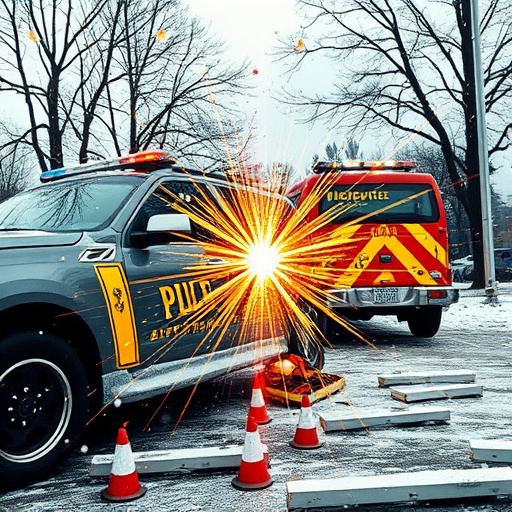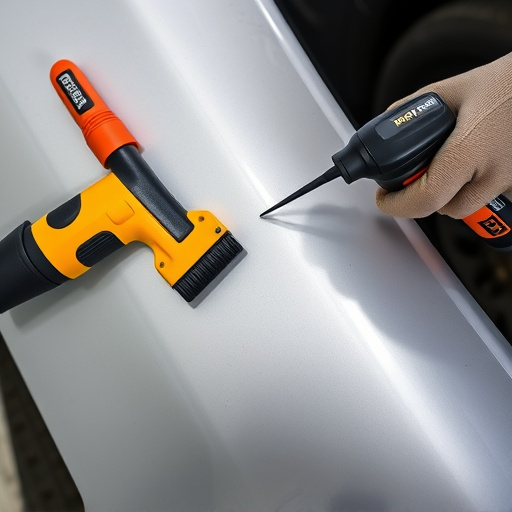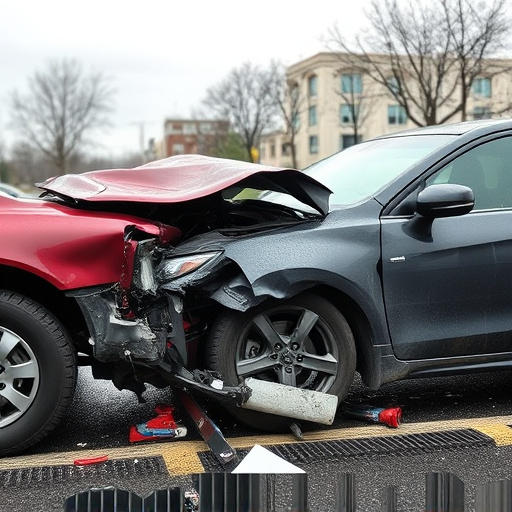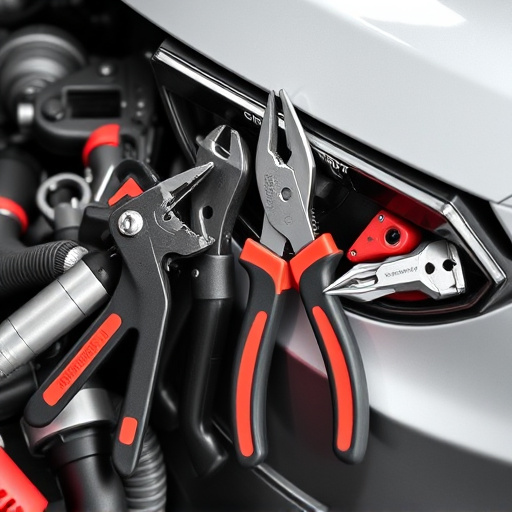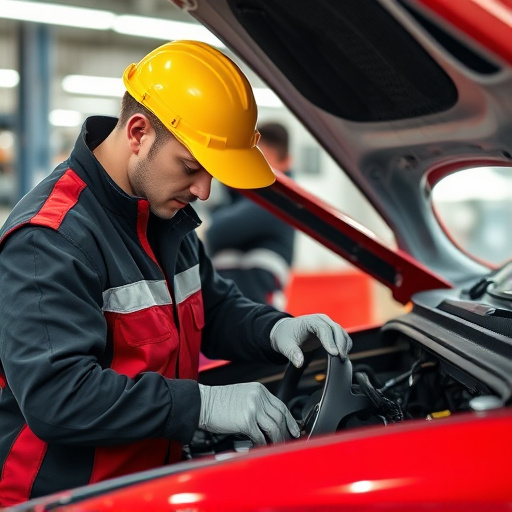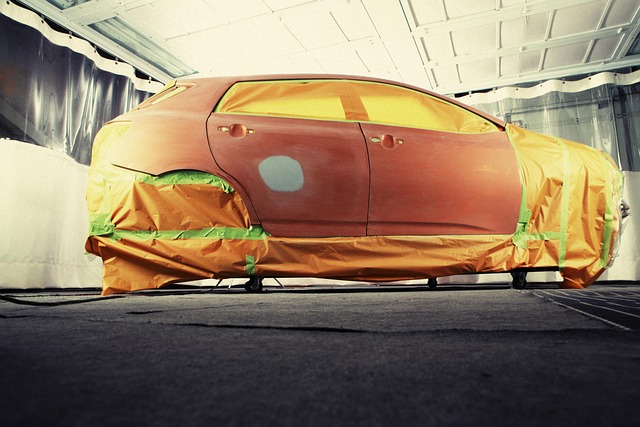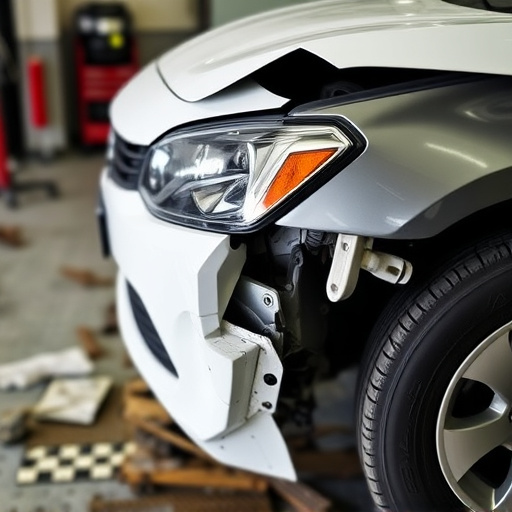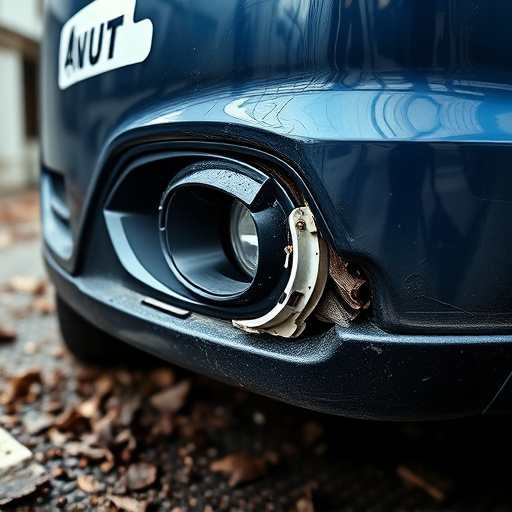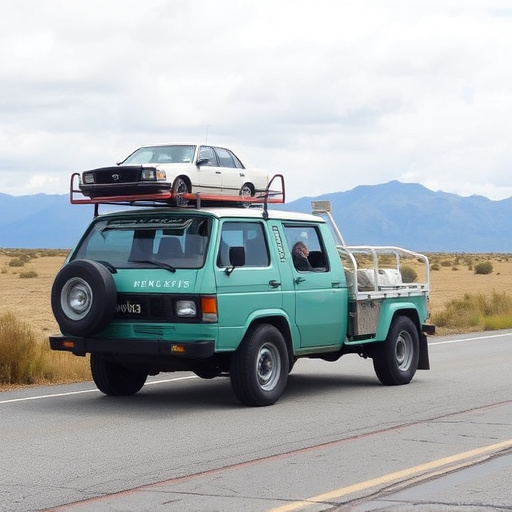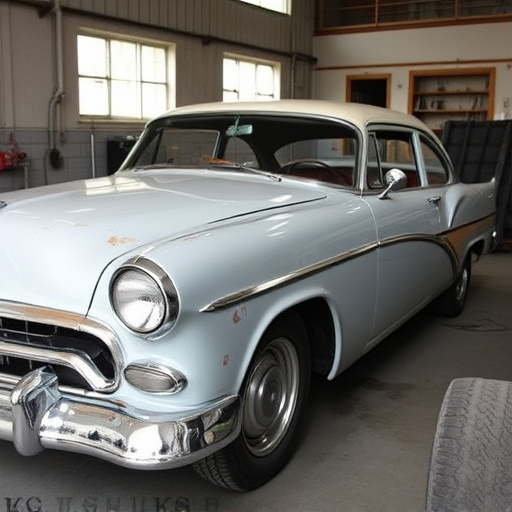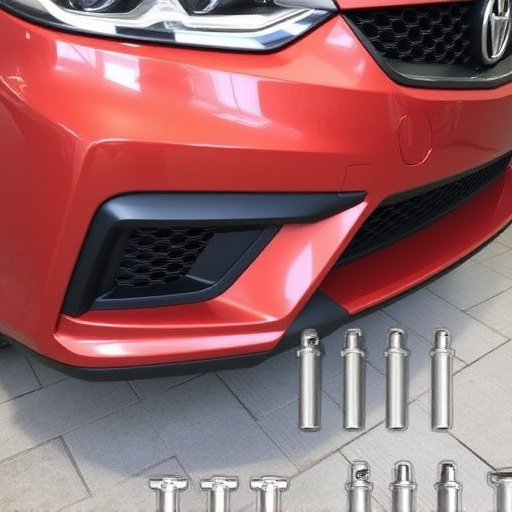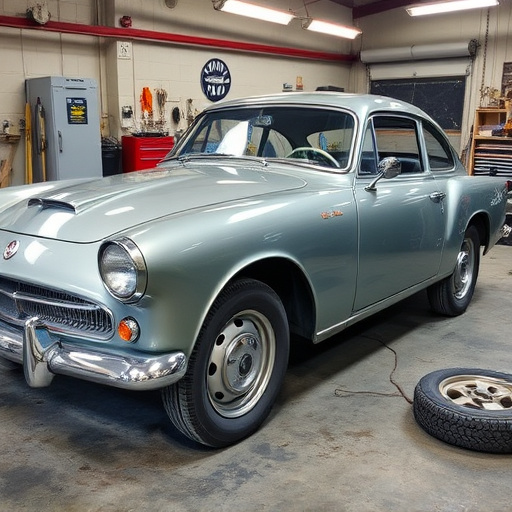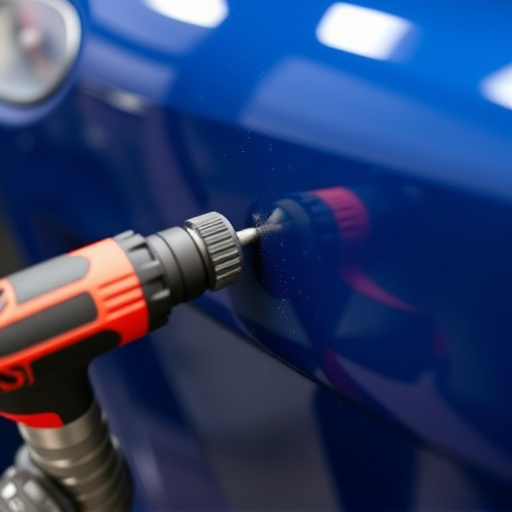Meticulous metal fabrication collision repair process begins with expert assessment and preparation. Skilled technicians use advanced tools to inspect and clean damaged areas, ensuring structural integrity. Techniques like hammering, presses, laser cutting, and robotic welding restore vehicles to pre-accident condition, meeting or exceeding original equipment standards with superior precision and efficiency.
“Unraveling the intricate process of metal fabrication collision repairs offers a glimpse into the art and science of restoring damaged vehicles. This comprehensive guide explores the step-by-step journey from assessing collision damage to employing advanced techniques and technology.
We’ll first dissect the metal fabrication process, revealing its significance in automotive repair. Then, we’ll navigate through damage assessment and preparation, emphasizing precision and safety. Subsequently, discover a range of repairs, from traditional methods to cutting-edge technologies, revolutionizing the industry.”
- The Metal Fabrication Process Unveiled
- Collision Damage Assessment and Preparation
- Repairs: Techniques and Technology Used
The Metal Fabrication Process Unveiled

The metal fabrication process behind collision repairs is a precise art that transforms damaged vehicles into like-new conditions. It starts with a thorough assessment of the auto body repair needs, where skilled technicians identify and measure the extent of the damage. This critical step involves a deep understanding of automotive construction and the unique challenges posed by each vehicle model. Once the scope of work is defined, the metal fabrication journey commences.
Technicians employ a range of specialized techniques, from cutting and welding to shaping and forming metal sheets. They carefully disassemble affected components, separating damaged panels from intact parts. This meticulous process ensures that only the required sections are replaced, promoting cost-effectiveness while maintaining structural integrity. The fabricated metal parts are then expertly welded back into the vehicle’s frame, guaranteeing a robust bond that meets or exceeds original equipment standards. This intricate dance of precision and craftsmanship is what transforms a collision-damaged vehicle into a sleek, safe, and reliable ride again, showcasing the expertise offered by top-tier automotive body work and vehicle repair services.
Collision Damage Assessment and Preparation
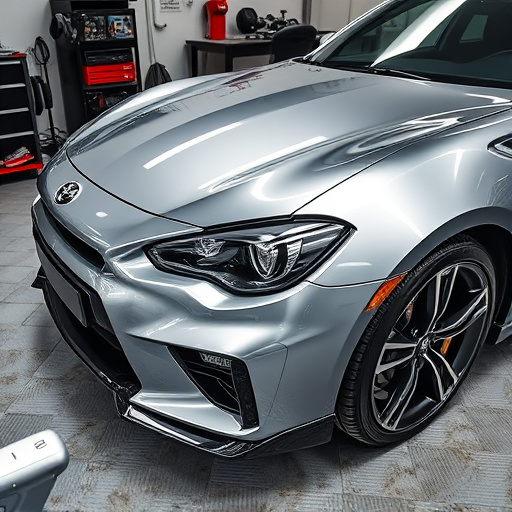
Collision Damage Assessment and Preparation is a critical first step in any metal fabrication collision repair process. Automotive collision repair experts meticulously inspect vehicles to identify every dent, scratch, or structural damage caused by the impact. This involves using advanced diagnostic tools and manual examination to ensure no hidden damage goes unnoticed. Once all damages are accurately documented, the vehicle is ready for preparation, setting the stage for successful repairs.
Before any actual metal fabrication begins, the damaged area must be thoroughly cleaned and prepared. This step includes removing debris, rust, and contaminants that could hinder the repair process. Techniques like sanding, priming, and surface treatment are employed to create a smooth foundation for the subsequent dent repair work in the automotive body shop. Proper preparation ensures that the final repairs are both aesthetically pleasing and structurally sound.
Repairs: Techniques and Technology Used

In metal fabrication collision repairs, a multitude of techniques and technologies are employed to restore vehicles to their pre-accident condition. The process begins with a thorough inspection to assess the extent of collision damage repair required. This includes identifying dents, cracks, and other structural integrity issues using advanced scanning tools. Once the damage is accurately mapped out, skilled technicians employ various methods like mechanical hammering, hydraulic presses, and specialized welding machines to straighten metal panels and reshape components.
Modern technology plays a significant role in enhancing precision and efficiency during auto body repairs. Laser cutting systems, for instance, enable precise removal of damaged areas while minimizing material waste. Robotic welding arms ensure consistent and high-quality welds, crucial for structural integrity. Additionally, computer-aided design (CAD) software aids in creating accurate templates for replacement parts, streamlining the process of obtaining exact fits. These advancements in auto repair services contribute to faster turnaround times and superior collision damage repair outcomes.
Understanding the intricacies of metal fabrication collision repairs is a game-changer for anyone involved in vehicle restoration or automotive engineering. By mastering the process, from assessment to advanced repair techniques, professionals can ensure superior results and customer satisfaction. This knowledge highlights the importance of precision, technology, and expertise in the metal fabrication realm, ultimately revolutionizing how we approach collision damage repairs.
